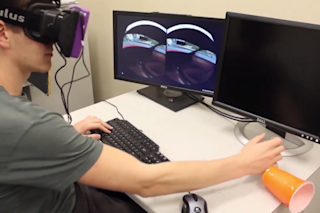Credit: Pulkit Budhiraja / University of Illinois at Urbana-Champaign How do you physically grab a drink while wearing an Oculus Rift headset that has you immersed in virtual reality? Figuring out how to navigate smoothly between the physical and virtual worlds could greatly improve virtual reality experiences as VR headsets become more widespread in both entertainment and workplaces. Researchers at the University of Illinois at Urbana-Champaign decided to test out several possible scenarios that would allow people to see just enough of the physical world to take a sip of coffee or soda without removing their virtual reality headsets. Researchers figured out how to create "renderings" of the physical world within virtual reality experiences by using two cheap webcams to capture the real-world action. They then recruited 10 participants who tried out each of the renderings under various virtual reality scenarios: watching a movie, playing a first-person shooter video game, ...
How to Grab a Drink Without Leaving Virtual Reality
Enhancing virtual reality experiences by blending physical interactions, researchers explore new ways users can drink without removing headsets.
More on Discover
Stay Curious
SubscribeTo The Magazine
Save up to 40% off the cover price when you subscribe to Discover magazine.
Subscribe













